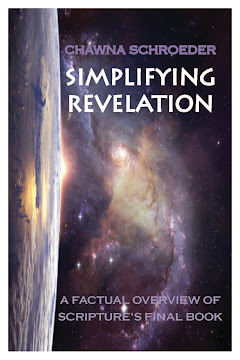The term point-of-view commonly pops up in my book reviews. Simply known in the writing world as POV, this refers to the lens—or lenses—through which a reader sees the story. (Note: I’m using the term here as novelists use it, not a screenwriters use it.)
There are many possible ways to employ POV. You can also combine different types of POV. Some are easier to control than others, but each serves a purpose. Ultimately, consistency is key: whatever POV chosen, it should be used until a logical break in events, usually at the end of a scene (frequently a change of place and/or time).
So what are the basic points-of-view used by writers? It comes in two parts: Time of action, and narrator of action.
Time of Action
Time of action refers to the tense of the narration, either past or present.
Past: Action told as if action has already occurred.
Example: We left the house and drove to the store.
Present: Action told as it’s unfolding.
Example: We leave the house and drive to the store.
Narrator of Action
A narrator simple is the person who is telling the story—the one observing/participating in the current action. Narrator can be combined with any time of action, though present tense is most commonly used with the first-person. For ease of comparison I will give all narrator examples in the past.
Omniscient Unlimited: The God-like view which sees and knows all things. Very difficult to pull off well, as it can be very confusing and connections with characters don’t form as easily. It’s mostly out of vogue in modern fiction.
Example: Jane and Alfred left the house, each privately wondering what the other thought. But neither spoke during the drive to the store.
Omniscient Limited: Camera view—you know only what you can observe, that is, see hear, taste, touch and feel. No thoughts of characters allowed. Again, difficult to manage, difficult to create character connections with reader.
Example: Jane and Alfred left the house. Jane clutched her purse tightly to her stomach while Alfred fumbled with car keys. Neither spoke a word the whole way to the store.
Third-person: The easiest and most common POV, third tells the story from one person’s perspective per scene. The story can employ just one perspective for the entire novel or switch between narrators (multiple third). Third also ranges from distant to close, defined by how much narrative and description in the characters’ own words. Distant is more like omniscient while close third places everything in the POV character’s language.
Example (third distant, in Alfred’s POV): Alfred followed Jane out of the house. The sun was bright, and he fumbled with his keys, wondering if Jane had noticed.
Example (third close, in Jane’s POV): Jane stepped out of the house, pressing her purse to her roiling stomach. The warm light scorched her skin, but she shivered. What would happen now? Did she really dare go through with this?
Second-person: A narrator tells the story as if watching the reader act it out. Very rare, and by far the hardest POV to pull off.
Example: You stepped out of the house, wondering whether you can really go through with what you intended. You glance at Alfred fumbling with his keys and swallow. Now what?
First-person: Action told by a character in his own words. It can be single or multiple like in third, though single is far more common. First-person creates a close connection between a character and reader, but require care to avoid an egotistical or complaining feel.
Example: I stepped out of the house, palms sweating even as they pressed my purse to my stomach. And the sun—it was so hot, so very hot. Yet I shivered. Could I really go through with this?
Each POV has its limitations and advantages. But there is no right or wrong. Rather the question is what perspective tells the story best?
Monday, February 1, 2010
Subscribe to:
Post Comments (Atom)




2 comments:
Ugh, guilty. I could write an entire novel with flawless sentence structure, plot consistency, and not a single spelling error, but when it comes to POV.... I'm afraid I have a knack for switching from third person to first person and back again. Frustrating, to say the least. And no, I have no idea how I do that.
This post is very well-written. Many people look at the explanations of types of point of view with confused silence, followed promptly with "huh?" It's refreshing to see a clearly written, simple description of POV's. Ever think about writing English books for junior high school? I would have loved to have read this then!
Thanks for the post. I'm so glad I found this.
S
Shirley~ I'm glad you found the post some help! I agree. POV can be very confusing. But while it can be one of the most difficult to master, it adds so much depth and dimension when used well. So keep trying! It will come.
Post a Comment